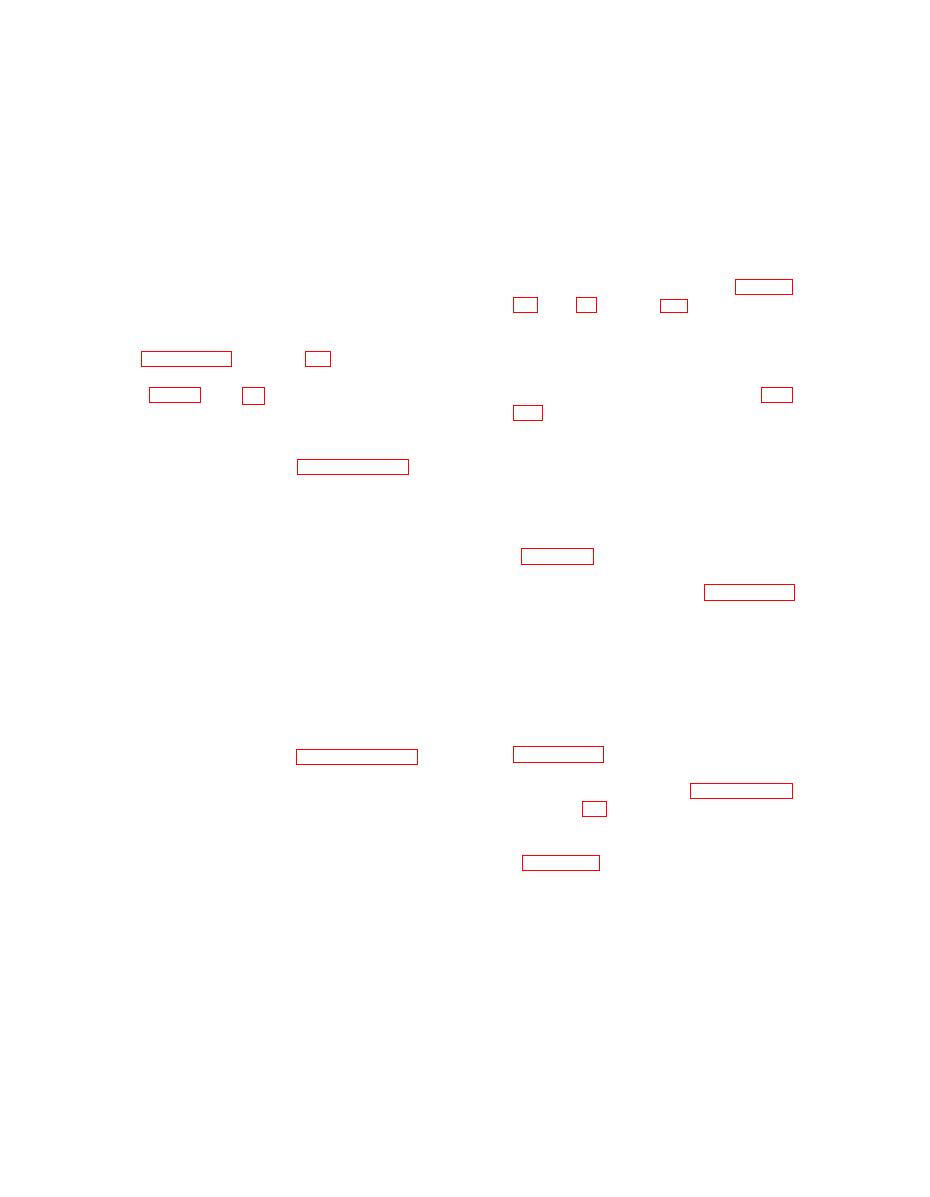 |
|||
|
|
|||
|
Page Title:
Resistance measurements |
|
||
| ||||||||||
|
|  panel. One screw each is located
and then isolate the trouble within that cir-
at the top, bottom, right, and left
cuit by voltage, resistance, and continuity
sides of the tuning unit dust
measurements.
(1) Resistance measurements. The use
cover.
(c) Hold the front panel securely and
o f resistance measurements to lo-
c a t e trouble will prevent further
carefully slide the dust cover off
d a m a g e to the equipment if short
t h e tuning unit frame assembly.
(2) Voltage measurements. Most trou-
c i r c u i t s are present. To assist in
b l e s either result from abnormal
the localization of such faults,
v o l t a g e or they produce abnormal
t r o u b l e s h o o t i n g data include the
v o l t a g e s . Normal voltages at tube
n o r m a l resistance values as meas-
sockets and key terminal points in
ured at tube sockets and at key ter-
the main unit are shown in figures
m i n a l points. The normal resist-
ance values at any point in the main
p o i n t for measuring power supply
unit can be determined by referring
voltages is at the feedthrough ter-
t o the resistance values shown in
minals which project from the
filter box assembly, mounted on the
r e s i s t o r and capacitor color codes
exterior rear of the main unit (fig.
r e s i s t a n c e measurements, turn off
taken with the normal readings
the power and remove the main unit
s h o w n . Tube socket voltages
d u s t cover by following the pro-
checks for the electron tubes
cedure described in paragraph 40b,
housed within each tuning unit can
item 12, of TM 11-6625-351-12. A
be Wade only by use of Cable As-
convenient point for making overall
sembly, Special Purpose, Elec-
r e s i s t a n c e measurements of a tun-
t r i c a l Branched CX-6681/URM-85
ing unit is at the multipin connector
l o c a t e d at the rear of the tuning
c o v e r of the tuning unit must be
unit chassis. With a tuning unit re-
r e m o v e d ((1) above). Figure 46
moved from the main unit and
i l l u s t r a t e s a typical tuning unit
placed on the workbench, this con-
operating outside of its tuning unit
n e c t o r permits a checkout of the
c o m p a r t m e n t and receiving proper
proper resistance value for the 20
a c and dc potentials from the re-
terminals w i t h i n the connector
c e p t a c l e mounted on the rear in-
housing. If trouble is indicated by
terior wall of the tuning unit com-
l a c k of correspondence between
p a r t m e n t . With a malfunctioning
a c t u a l measurements taken at the
tuning unit set up as shown in
multipin connector and the normal
r e a d i n g s listed in paragraph 68,
readings taken with the normal
f u r t h e r localization of the trouble
readings shown in figures 47
must be obtained by measuring re-
through 50.
sistances at the various tube
(3) Troubleshooting chart. The t r o u-
sockets within the tuning unit. To
b l e symptoms listed in the chart
gain access to the tuning unit tube
( p a r a 67) will aid in localizing
s o c k e t s , remove the tuning unit
trouble.
dust cover as follows:
(4) I n t e r m i t t e n t troubles. In all these
(a) R e m o v e t h e f o u r s c r e w s t h a t
secure the rear of the tuning unit
t e s t s , the possibility of intermit-
t e n t troubles should not be over-
dust cover to the tuning unit frame
looked. If present, this type of
assembly.
trouble often can be made to appear
(b) Remove the four screws that se-
b y tapping or jarring the equip-
cure the tuning unit dust cover to
m e n t . Check the wiring and con-
the rear of the tuning unit front
92
|
|
Privacy Statement - Press Release - Copyright Information. - Contact Us |